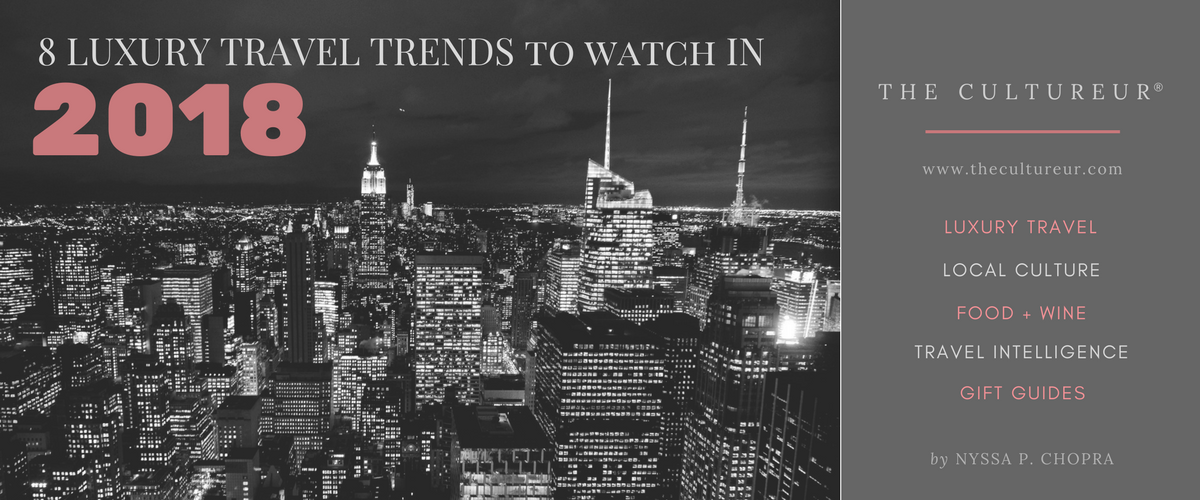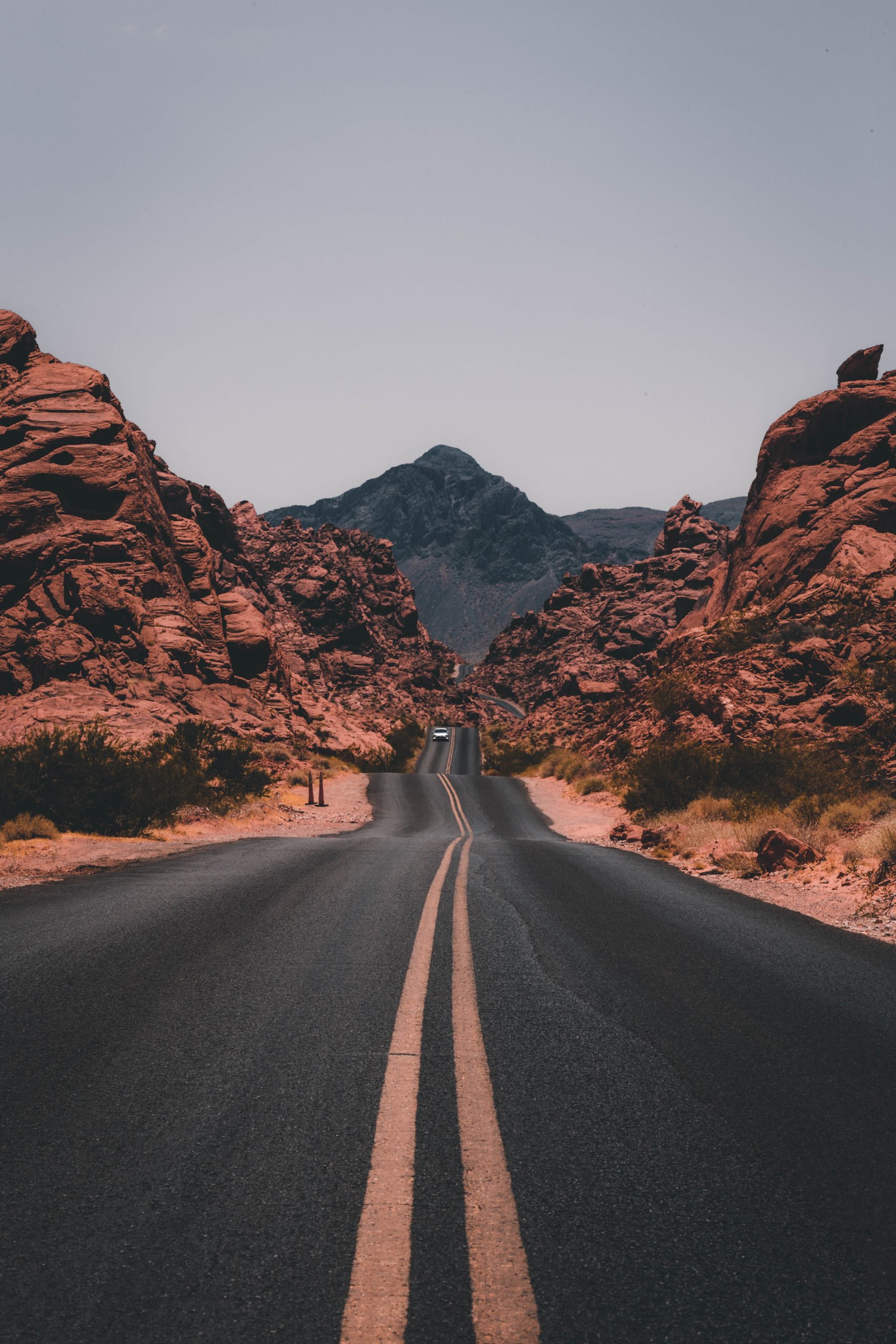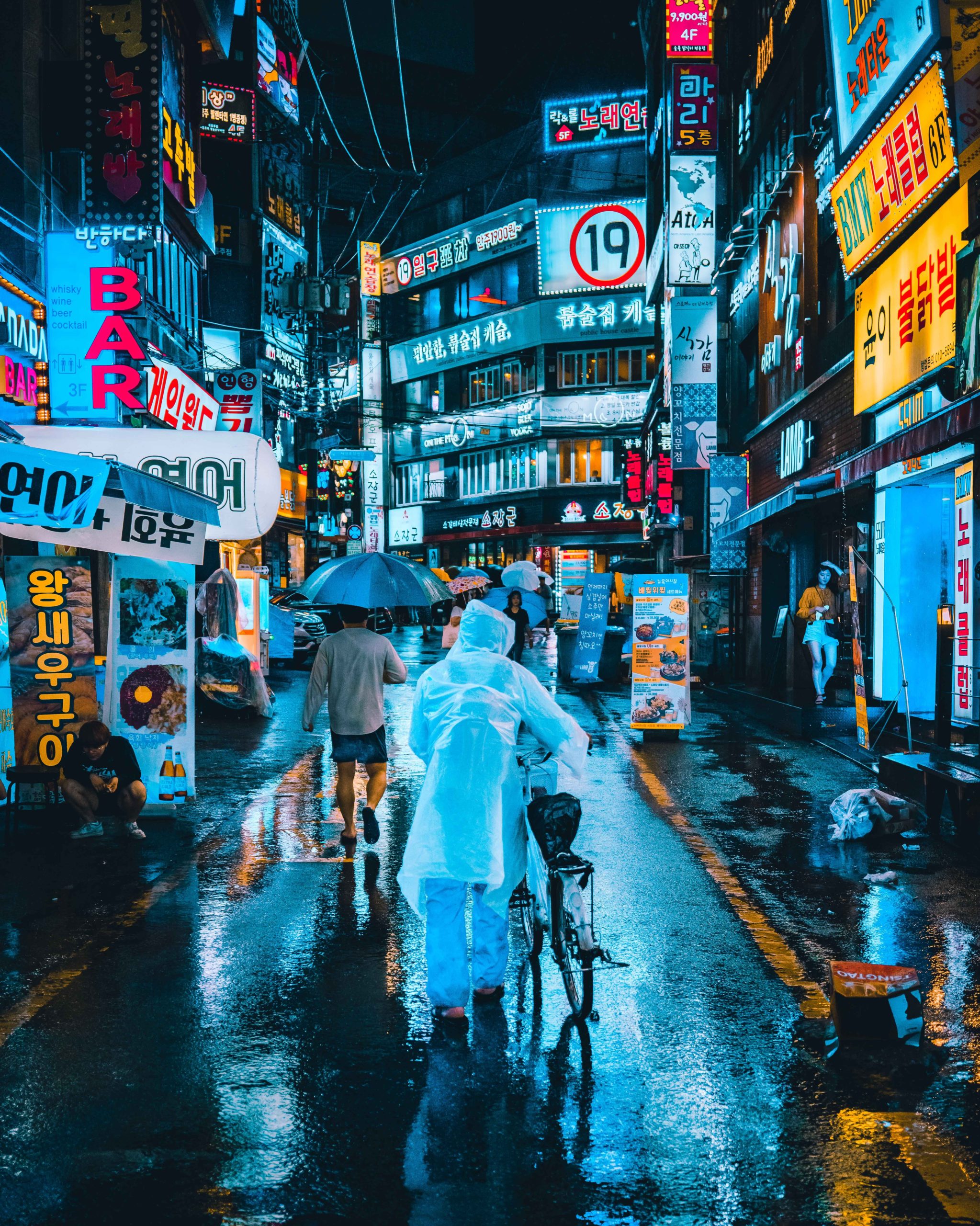What are the luxury travel trends in 2018?
Luxury is probably the most overused word in the marketplace. The definition of luxury travel has changed and evolved based on the Zeitgeist, but the parts that have stayed true to the notion of luxury are scarcity, authenticity, and exclusivity.
As a consumer, journalist, lawyer, and marketer within the luxury travel sector, I’m always keen to look at the industry from a wide-angle lens that covers multidisciplinary perspectives. I’ve had the pleasure of working with some of the biggest brands in luxury travel, and through my conversations with thought leaders and my interdisciplinary work, I’ve studied the emerging trends, observed the fundamental shifts, and forecasted the new contours of the luxury travel sector.
I recently spoke with a market research firm about luxury travel trends in 2018. Humbled by the title of tastemaker in luxury travel, I am grateful to share my opinions and insights on where the industry is headed and to use my voice and platform to bring awareness to those luxury travel trends. With so many ideas bubbling in my head, I want to share a few thoughts on the future of luxury travel — some trends, some themes. There’s plenty of other trends and changes happening in the luxury travel space, but I’ll keep those for another day.
1) Transformative and immersive experiences are en vogue. The age of automation, globalization, and technology have led to the homogenization of cities and urban centers, so there’s a heightened craving for authenticity and transparency and a strong desire to peel back the layers of local culture that have now been shrouded by mass tourism. There’s a fundamental need to connect with one’s self, the community, and the world at large and to create experiences that are deeply personal and transformative that are not only authentic and exclusive, but also fulfilling and enriching. If this sounds like experiential luxury travel, you’d be right. Experiences (the current marketing buzzword on everyone’s lips…literally everyone) are at the forefront of almost every travel company, luxury hotel, restaurant, and organization.
2) The rise of “affordable luxury” is raising the threshold of luxury travel. The more companies try to make luxury travel accessible to the masses, the more it’s pushing the boundaries and standards of the industry — if everyone can do it or have it, it’s not luxury by definition. Affordable luxury taps into a certain subsegment of the luxury travel market — the emerging premium class — but it’s diluting traditional notions of luxury and pushing the industry to constantly reinvent the spirit of the word.
3) Millennials and Gen-Zers are highly sensitive to the values of a company. Young consumers are driving businesses to focus not just on their bottom line, but also on their social values and their commitment to the community, particularly in this divisive political climate. These particular demographics are challenging both well-established and emerging brands. In the same vein, in basic economics terms, social impact and sustainability (moving beyond its ecological connotation) will be a huge focus for brands simply because Millennials demand it. Suppliers in the luxury travel market have the opportunity to be pioneers in the quest for ethical luxury, and many companies and social enterprises have already taken the reins. A prime example is the sustainable luxury hotel Cayuga Collection in Costa Rica.
4) Marketers are finally realizing the segmentation of the modern luxury travel market. Thirty or forty years ago, luxury travelers were clumped into one homogenous group, more or less. Today, however, the luxury travel sector is comprised of many different subsegments (premium, elite, aspirational, etc.) and marketers are savvier than ever before in grouping them into their individual groups based on psychographics instead of just demographics. This is particularly poignant for the Millennial group that everyone is trying to target. I’ve worked with many brands on how to market to Millennials, and I’m always shocked that even some of the biggest brands in luxury travel don’t understand the wide spectrum of Millennials and that Millennials don’t fit neatly into one monolithic category. Marketing to older Millennials (such as myself) in the same way as younger Millennials is not only unproductive, but it’s also a waste of time, energy, and money. You’re looking at entirely different purchasing powers, range of preferences, education levels, etc. But thankfully, there’s a broader understanding today that luxury travelers don’t fit one mold and the industry is finally learning how to embrace the sensibilities and profiles of old money and new money luxury travelers in the same vein. A great example of this is the recent global advertising campaign by Rosewood Hotels.
5) There’s a shift toward affluent credit cards with high fees as a ticket to a luxury lifestyle. The travel perks, curated experiences, lounge access, personalized hotlines, etc. are all becoming more and more commonplace. It’s driving competition and pushing credit card companies to launch bigger and better campaigns. The wild popularity (particularly amongst Millennials) of the Chase Sapphire Reserve credit card in 2016 is a testament to the rapidly growing travel segment and the rise of luxury travelers. Even with an annual $450 fee, price sensitivity is much less of an issue if you can promise exclusive perks and a better travel experience for frequent fliers.
6) The use of travel designers and curators will continue to grow. Back in the day, before DIY travel booking, travel agents were all the rage and in many cases, essential. But the role of travel agents started to unravel with OTAs and travel apps. But because everything old becomes new again, travel agents in the form of travel designers and travel curators are en vogue again. Crowdsourcing itineraries through social media and blogs still have their own place, but the sheer volume of information on the Internet has paved the way for travel experts to design and curate customized itineraries. I received so many requests for trip curation from my own readers that it’s the reason why I launched Luxe Concierge.
7) Social media will greatly affect the design of luxury hotels and restaurants. While design has always been at the forefront of restaurants, beautiful backdrops that take into consideration the ambiance, the lighting, the colors, and the utensils are now becoming just as important as the food, and thanks to visual-heavy platforms such as Instagram, restaurateurs are figuring out how to translate a culinary experience into a social media experience. Similarly, designers of luxury hotels are looking at how hotel experiences can go viral and how to turn guests into advocates for the hotel brand by incorporating elements of the local culture and using architecture to embrace a sense of place. Features such as infinity pools and rooftop bars are always safe bets, but that in the future, hotels will take it to the next level, literally creating premeditated Instagram photos. Social media is the new currency of social status and prestige. The more exclusive and photo-worthy the experience, the better.
8) Luxury fashion designers will continue to spill into the luxury hospitality space. Luxury fashion brands such as Louis Vuitton and Bulgari have cultivated brand names that have transcended generations and remained relatively immune to the volatility of trends. The timelessness of such brands comes from the brand equity that has been developed through a carefully crafted purpose-driven approach and fiercely protected by trademark law, both domestically and abroad. As a result, a growing number of iconic brands are capitalizing on their brand recognition and brand loyalty and thus, have entered the luxury travel and hospitality space, as a brand extension. Companies are beginning to leverage their trademarks in ways that are outside the box, hoping to have their pristine and prestigious brand names lead the way into areas traditionally outside their expertise. Some expand into new product niches to transform a luxury brand into a global lifestyle powerhouse, while others are finding new areas of growth such as the rapidly expanding luxury travel market, which has seen exponential growth in the past several years due to the experiential travel preferences of the millennial demographic. The luxury jeweler Bulgari was a pioneer in the move into hotels. Although some initially questioned what a watch and necklace maker would know about hotels, Bulgari was one of the most recognized luxury brands in the world, and its powerful brand equity facilitated its foray into the luxury travel and hospitality market. Today, Bulgari has branded hotels in Milan, Bali, and London, and plans are in the works to open new ones in Shanghai, Dubai, and Beijing. A flurry of companies — including the designer Karl Lagerfeld, the upscale fitness club Equinox, and luxury furniture maker Restoration Hardware — have announced plans to open hotels or residential properties in the next two years. Other luxury brands that have already (successfully) entered the luxury travel market are Giorgio Armani, Ferragamo, and Fendi.
What are some trends and themes you’ve noticed or are hoping to see in the luxury travel industry?






